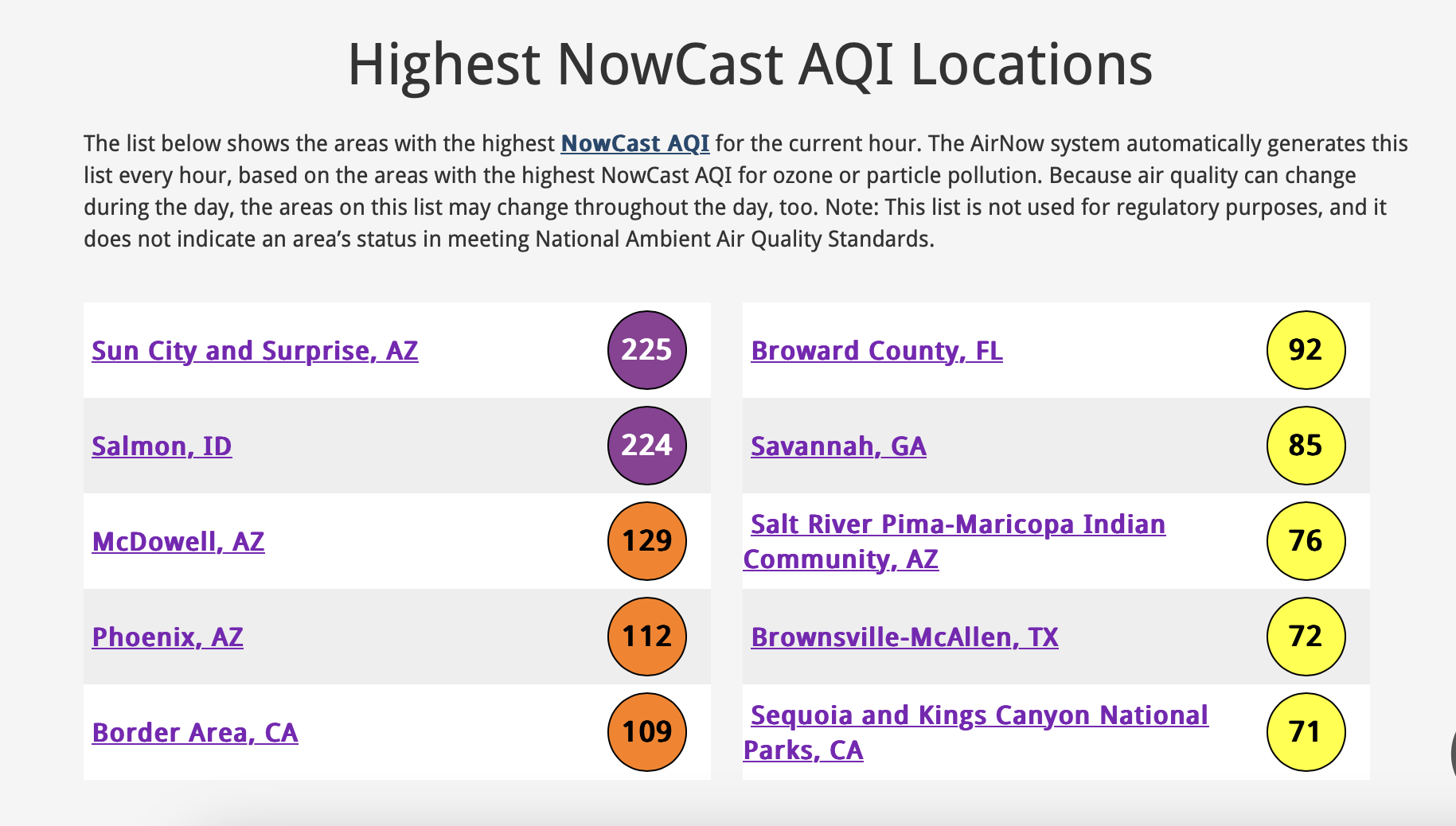
National Parks Service photo by Ian Wilson/Flickr

Audio By Carbonatix
As wildfires continue to burn in the South Florida Everglades, the region continues to contend with one of the worst air-quality ratings in the nation, according to the government-operated website AirNow.
This news likely comes as no surprise to anyone who walked outside in the Miami area the past two days, as smoke can be seen across Broward and Miami-Dade counties. Thanks to the fires, both Broward County and North Miami suffered the worst air quality in the nation Wednesday. By Thursday morning, the situation had improved to the point where Broward County ranked sixth on the list, but the National Weather Service continued to warn residents to be wary of billowing smoke.
At stations in Broward County Thursday morning, the tracking site pegged the air quality index (AQI) at 92 – a level considered safe, but approaching unsafe pollutant levels for those sensitive to particle pollution. The Air Quality Index ranges from 0-500, with higher numbers representing worse conditions. Levels above 100 are considered unsafe.

Broward County had one of the worst air quality in the nation Thursday morning thanks to three fires burning in the Everglades.
This year, make your gift count –
Invest in local news that matters.
Our work is funded by readers like you who make voluntary gifts because they value our work and want to see it continue. Make a contribution today to help us reach our $30,000 goal!
The South Florida blaze dubbed Mile Marker 39 Fire, which was first detected Tuesday, had burned about 19,000 acres by Thursday morning – a significant increase from about 1,600 acres on Wednesday, as that fire persisted west of Coral Springs in northwest Broward, according to the Florida Forest Service. As of Thursday morning, the blaze remained 0 percent contained.
A little to the west, a second, smaller blaze that has been labeled the Sawgrass Fire covered 250 acres, the same footprint as Wednesday; it too remained 0 percent contained as of Thursday morning.
A third fire, the Krome Avenue Pit Fire, is still burning just west of Sweetwater in Miami-Dade County, covering 200 acres. As of this writing, it is listed as 95 percent contained, up five percentage points from Wednesday.
AirNow determines its rankings by the presence of pollutants in the air, denoting those over 2.5 micrometers across in diameter – ash in this case. The U.S. Environmental Protection Agency developed AQI as a tool to measure air quality for the public. Large particles, such as smoke, are visible to the naked eye, but smaller particles from the same source can be more harmful, according to the U.S. Centers for Disease Control and Prevention (CDC).
AirNow has detected those smaller particles, referred to as PM2.5, being expelled from the three Everglades fires. The particles could be harmful to anyone who inhales them, but particularly babies, children, and those with lung diseases, heart disease, or diabetes, according to the CDC.
Anyone with one or more of those conditions should be aware of their area’s air quality and take precautions when AQI rises to unsafe levels; precautions include staying indoors more often, avoiding strenuous outdoor activity, and avoiding busy roads and highways.